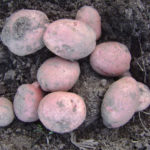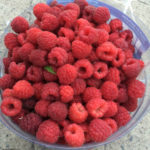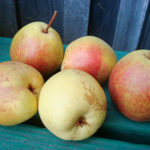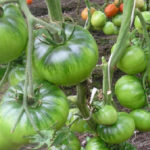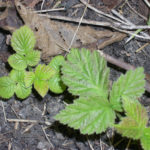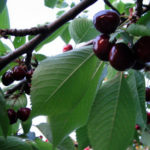Thuja western Golden taffett
Thuja is very popular in modern landscape design. Specimens of a coniferous plant with an unusual shape are especially appreciated. Golden taffett variety (Thuja occidentalis Golden tuffet) - one of them.
History of creation and description of the variety
Our heroine is a stunted coniferous shrub with a pillow-shaped, slightly flattened crown, reminiscent of a mushroom cap. Translated from English, the name of the evergreen culture is translated as "Golden Hill". This variety is a spot of thuja western Rheingold.
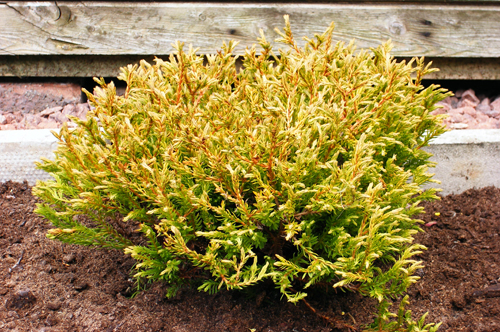
The plant is formed by flattened bilateral branches and short, thin, rather flexible, hanging shoots. The scaly needles of the bush are not pressed against the branches, consist of needles and look incredibly delicate. Its golden yellow color also makes it attractive. However, at the base of the needles of the culture are light green. Gradually, the ends of the thin needles acquire a bright yellow-orange hue, which turns into a dark bronze color with the onset of winter. Coniferous scales are covered with a thin waxy coating and are supplied with glands with essential oil rich in phytoncides.
Golden taffett is a slow growing crop. In a year, it adds no more than 12 cm in size.For this reason, at the age of 10, the diameter of the ephedra is 50 cm.The plant, which celebrated its 25th anniversary, reaches 90 cm in height and a little more than a meter in width. The branches of young thujas are covered with smooth, reddish-brown bark, which turns gray-brown as they mature. The fruiting period of the golden beauty, starting at 10 years old, is characterized by the appearance of small cones about 8 mm long on it.
It is a very shade-tolerant and winter-hardy variety that can withstand frosts down to -34 ° C. But, unfortunately, the plant's immunity is not too high, since the ornamental coniferous shrub is often attacked by harmful insects (first of all, the thuja false shield) and the appearance of fungal diseases. In early spring, he can fall prey to sunburn.
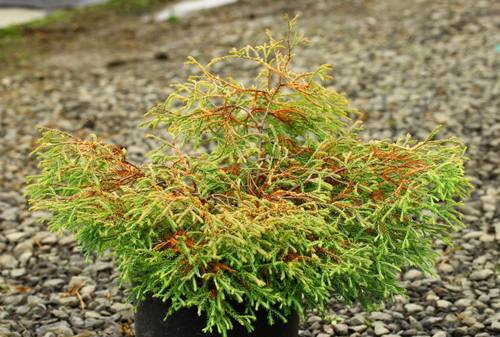
Features of agricultural technology
Golden taffett is very fond of light, but it also tolerates partial shade without any problems. You should not choose a shady corner of the personal plot for its placement. Otherwise, do not be surprised by the tarnishing of the needles and the loss of density by the crown. The plant grows well on moist, fertile, loose soils with a pH in the range of 5-6 units. It is optimal to use sandy loam or loamy soil for it.
Ornamental crops are planted in early autumn or spring. A distance of 0.5 to 3 meters is left between the plants. The root collar is not buried - it should be located at ground level. For the normal growth of the ephedra and the preservation of the decorative appearance of its crown, it is required to follow all recommendations for caring for the thuja. Here they are:
- regular and moderate watering with soft water;
- the implementation of sprinkling of the crown in the hot summer period;
- the introduction of complex mineral fertilizers for crops in spring and summer;
- loosening and mulching the area of the trunk circle;
- timely weeding;
- preventive treatment of shoots with copper-containing preparations;
- annual sanitary and formative crown pruning.
As a rule, young specimens are sheltered for the winter. Spruce branches are used as insulation. This material will additionally protect thuja from possible damage by rodents.
Use cases
Golden taffett variety is an indispensable element of garden and flower garden design. It is suitable for creating contrasting compositions where golden ephedra is effectively combined with evergreens, the needles of which have darker shades.The shrub is used as a single crop against the background of a grassy lawn; for decorating hedges, alleys, curbs, for decorating slopes. A cushion ephedra in a round flower bed is appropriate. In this case, peonies, roses, irises, daylilies, fragrant flowering herbs will serve as excellent companions for him. Ground cover crops, annuals and perennials with small flowers can be planted around the plant. Owners of yellow, bright red, lilac, blue and purple inflorescences will look especially attractive next to a shrub.
